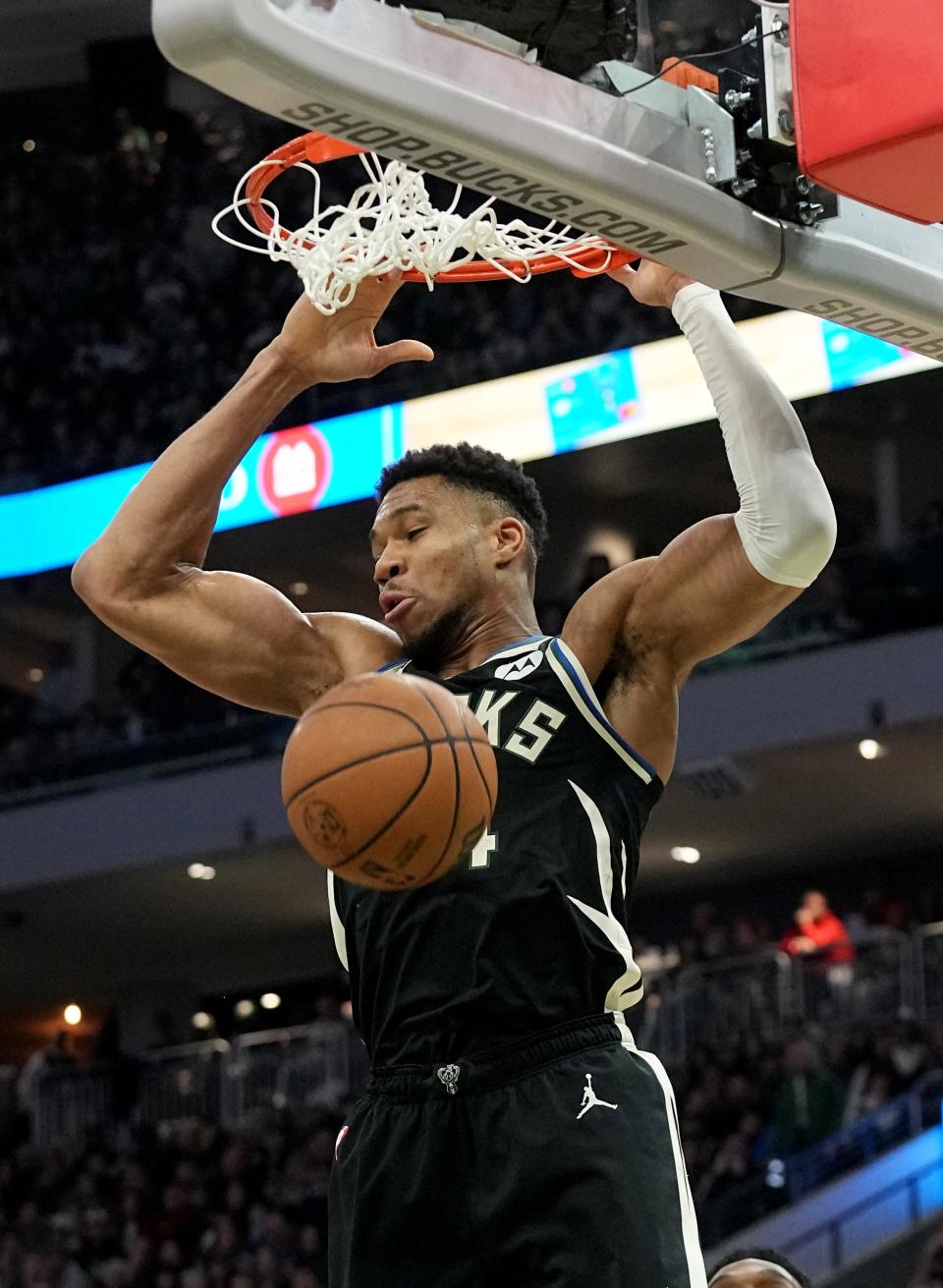Who are the five best draft picks in Milwaukee Bucks history?
Author’s note: This list gave preference to players who suited up for the Bucks – or were drafted with the intent they would play in Milwaukee. So, Dirk Nowitzki or Stephon Marbury are not on this list.
Every team in every sport that holds an amateur draft is going to have its hits and misses, and the Milwaukee Bucks are no different. But their hits have been pretty good.
In their 56-year draft history, the Bucks have selected three of the top 75 players in NBA history (though one never played for the franchise), six Hall of Famers, nine all-stars and 10 all-NBA players.
Their very first pick was in the May 6, 1968 expansion draft with Len Chappell, and their first amateur draft selection was Charlie Paulk at No. 7 out of Northeastern State University on June 4, 1968.
The forward would play just 17 games in one year for the Bucks before serving in the U.S. military, but he played an integral role in the 1971 championship as he was packaged to Cincinnati with Flynn Robinson for Oscar Robertson.
Now that the trivia questions have been answered, let’s get into the top five draft picks in Bucks history:

1. Giannis Antetokounmpo, No. 15, 2013
Arguably the greatest example of “player development” in NBA history, the Bucks selected the spindly, 6-foot-9, 18-year-old out of a lower division Greek league with the belief he had all-star potential. But everyone in that front office led by general manager John Hammond acknowledges no one could have foreseen Antetokounmpo growing into the most dominant physical force in the league at 7 feet, 255 pounds.
Antetokounmpo would go on to make the all-rookie team, be named the league’s most improved player (2017), 2019 and 2020 league MVPs, 2020 defensive player of the year, 2021 All-Star Game and NBA Finals MVPs and also be named to the league’s 75th anniversary team.
The eight-time all-NBA and five-time all-defensive team selection also has made eight all-star appearances and owns nearly every franchise record.
More: Bucks' personal touch made Milwaukee the right place and the right time for Giannis Antetokounmpo

2. Kareem Abdul-Jabbar, No. 1, 1969
The consensus top pick in the draft following a stellar three-year career at UCLA (freshmen were not allowed to play in that era), Abdul-Jabbar was going to change the fortune of any team that picked him. The Bucks went 27-55 in their inaugural season in 1968-69 and won the chance to draft him by winning a coin flip over the Phoenix Suns for the top pick.
In his six years with the Bucks, Abdul-Jabbar was arguably the most dominant player in the league. He was the 1970 rookie of the year and was named MVP in 1971, 1972 and 1974. He won the league scoring title in 1971 and 1972 and made six straight all-star games and four all-defensive teams. He led the Bucks to their first title in 1971 and another trip to the Finals in 1974.
More: What happened to the coin that determined the fate of the Milwaukee Bucks and Phoenix Suns in 1969?

3. Bob Dandridge, No. 45, 1969
In the fourth round of the 1969 draft, the Bucks picked the perfect running mate for their top selection in Abdul-Jabbar by selecting Dandridge out of Norfolk State. The “Greyhound” quickly established himself as a top-level scorer alongside Abdul-Jabbar and Robertson and developed into a three-time all-star in his eight initial seasons with the Bucks. He helped them win the 1971 championship and return to the NBA Finals in 1974,
He then made an all-NBA team, all-defensive team and his last all-star team in helping Washington win the 1979 championship while averaging 20.4 points per game. He ended his Hall of Fame career back in Milwaukee in 1982.
More: Milwaukee Bucks legend Bob Dandridge elected to basketball Hall of Fame

4. Glenn Robinson, No. 1, 1994
There is a lot of scrutiny that comes with being the No. 1 pick, and Robinson walked into Milwaukee with a more powerful microscope than most when the team held a news conference to say the rookie out of Purdue turned down a $60 million deal. One day before the 1994 season began, Robinson finally agreed to a 10-year deal for a rookie-record $68 million. (The NBA instituted scaled salaries for draft picks in 1995.)
Even with that rocky start, Robinson energized a fan base that had not seen playoff basketball since 1991. He would go on to make two all-star teams (2000-01) and helped the Bucks to the 2001 Eastern Conference finals before being traded in 2002.
In his eight seasons in Milwaukee, he averaged 20.7 points and 6.1 rebounds per game and helped lead the Bucks back to relevance with four playoff appearances in his final five seasons on the team. He also ended his career as the franchise’s second-leading scorer.
More: Glenn Robinson helped turn the Bucks around

5. Sidney Moncrief, No. 5, 1979
Magic Johnson (No. 1) and Moncrief were the Hall of Famers that came out of this draft class, as the Bucks took the guard out of Arkansas to bolster their backcourt under head coach Don Nelson. Moncrief broke out in his third year with his first of five straight all-NBA berths, five straight all-defensive team nods and five straight all-star appearances. He also won the first two defensive player of the year awards in 1983 and 1984.
Moncrief also finished in the top 10 of MVP voting from 1982-86 and averaged 21 points per game from 1982-86.
Honorable mention (in alphabetical order)
Andrew Bogut, No. 1, 2005
Malcolm Brogdon, No. 36, 2016
Alex English, No. 23, 1976
Julius Erving, No. 12, 1972*never played for Bucks due to court injunction.
Bob Love, expansion draft, 1968
This article originally appeared on Milwaukee Journal Sentinel: Who are the five best draft picks in Milwaukee Bucks history?
